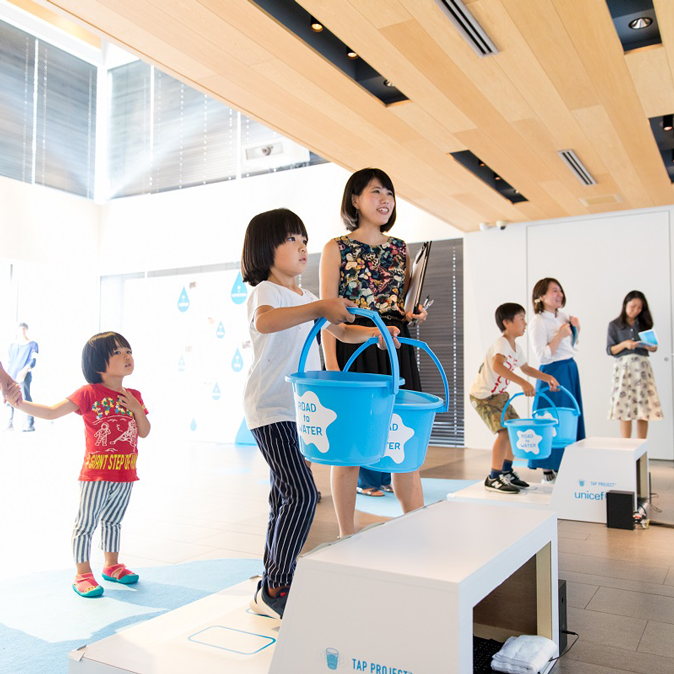- Viewpoints
- CSR
Social action at Hakuhodo DY Group
Hakuhodo DY Group’s corporate social responsibility (CSR) programs are rooted in a dedication to bringing new forms of happiness to people and society. This series of interviews features Hakuhodo people who actively apply their creativity, communication skills, and personal talents to tackling social issues beyond the office, with the goal of building a society where everyone can live a fulfilling life true to themselves.
Don’t let writing scare you!
A no-sweat writing class distilling the organizational techniques copywriters use
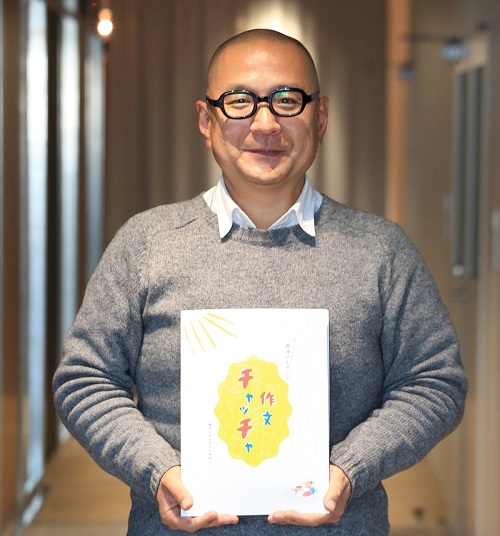 Sakubun Chatcha writing course instructor Eitaro Yuasa of Hakuhodo’s Creative Division, who also worked on developing the writing kit
Sakubun Chatcha writing course instructor Eitaro Yuasa of Hakuhodo’s Creative Division, who also worked on developing the writing kitSakubun Chatcha (“Writing in a Jiffy”) is a writing course for elementary school children that distills the techniques for organizing information applied every day on the job by Hakuhodo copywriters. The class, for which an illustrated guide and two colors of sticky notes have been developed, along with a custom Writing Kit complete with lined writing paper, teaches kids the three steps and three tricks that are the secret to writing with ease. Launched in 2014, the class has been given nine times to date, both at events for Hakuhodo DY Group family members and outside the company; some 220 schoolchildren* have taken it so far.
* As of March 12, 2018.
Solve the problem of not knowing what to write with oversized sticky notes
When I was mulling over what I could teach kids, I discovered that the biggest problem kids have when writing is not knowing what to write. It then occurred to me that maybe elementary school kids would struggle less with writing if they applied the techniques for organizing information that I myself have used as a copywriter for the past 20 years.
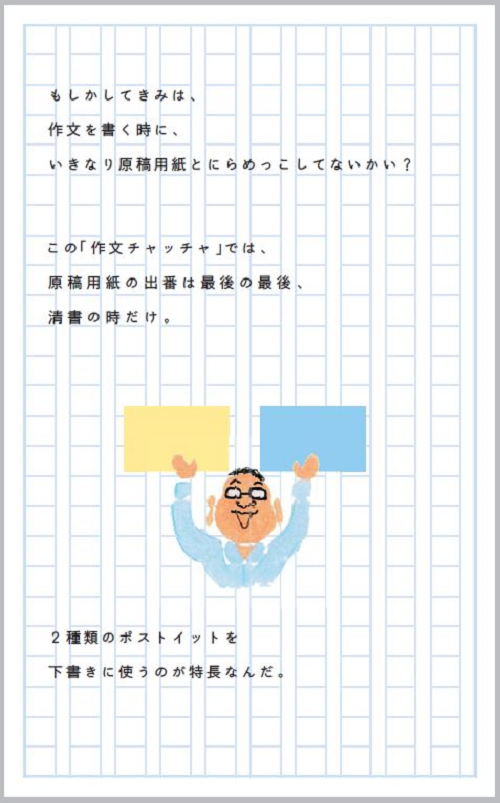 A page from the custom Writing Kit
A page from the custom Writing KitWe copywriters don’t just sit down and start writing away. We begin by jotting down whatever words or phrases we think might come in handy on oversized sticky notes—one per note. After a quarter of an hour furiously writing away like this, we stick the notes all over the desk. Then we examine the words on the Post-its to look for common threads among them, and sort the notes by theme. Having combined them one way, we’ll then remove them and arrange them in a different order, or add words or phrases as we marshal our thoughts.
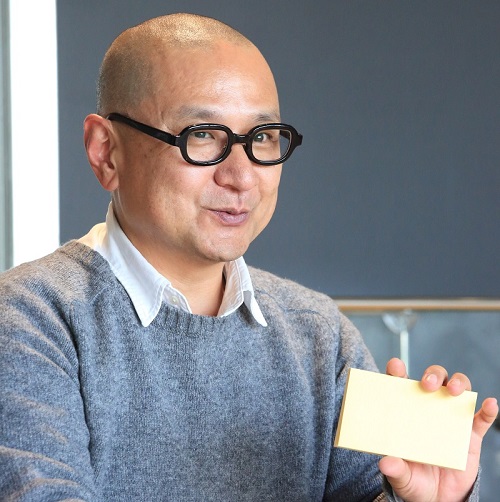
Writing is easier if you know how to explore everyday events
First, kids use the yellow sticky notes as “event records.” They jot down things that they recall have been happening in their lives—“Visited Grandma’s,” “Went swimming in the ocean”—one event per note.
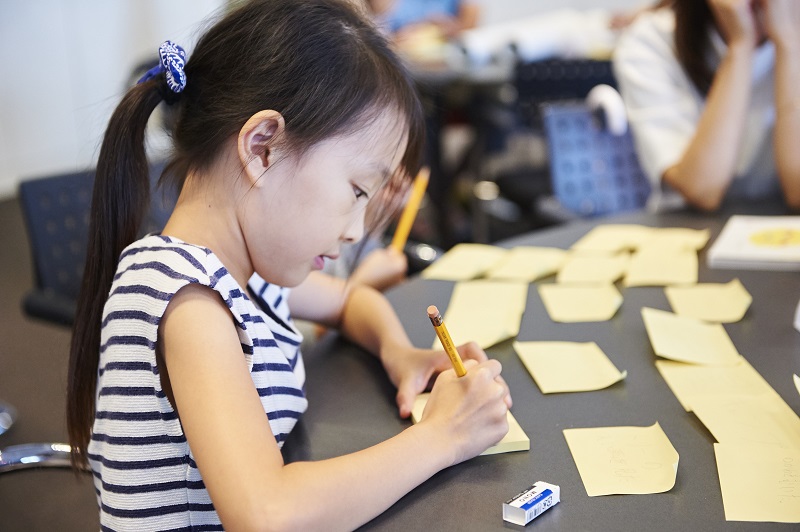 At open!SUNDAY 2016, when employees’ families visited the office to experience the job for themselves and try the company canteen
At open!SUNDAY 2016, when employees’ families visited the office to experience the job for themselves and try the company canteenThe blue sticky notes are for exploring further. Using these, you pick one of the events you wrote down on the event records, then elaborate on it as you recall it in greater detail. During the writing class we’re careful to respect the different viewpoints, vocabulary choices, and ideas of each child. Not a single word they put down is superfluous. We try to draw out what they really want to say. We encourage them to write exactly what they thought and how they felt, and if they come up with a scintillating phrase, we help them flesh it out.
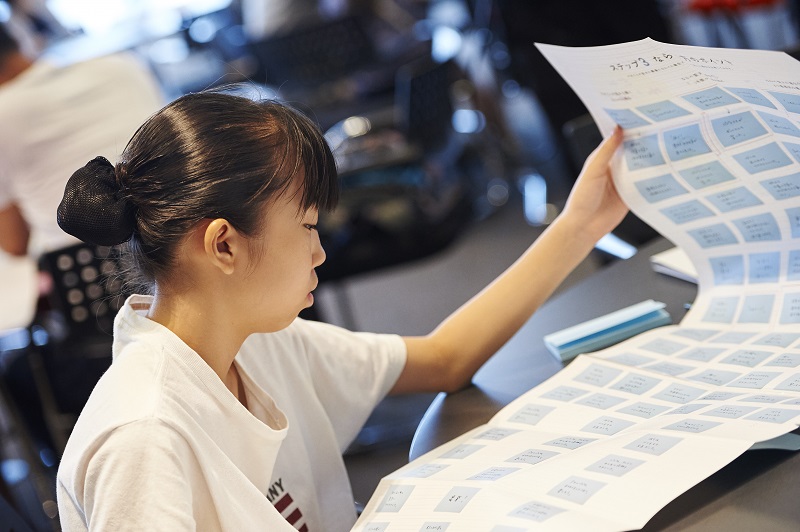 At open!SUNDAY2016
At open!SUNDAY2016Whether in advertising or in writing, the power of the subject matter is the first thing that makes a riveting text. But at the same time it’s also essential to have the ability to observe and describe things that have happened to you and around you. I want children to realize that both exist. In fact, it’s sometimes the case that something that happened within a five-meter radius of you, like stepping on dog poo and almost falling on your backside, may evoke greater sympathy or better reflect the trends of the day.

Another important aspect of Sakubun Chatcha is getting parents and kids to communicate with each other and share information. Inevitably the parent’s biases will assert themselves. The interesting thing is how children resist that and try to make the composition their own. Parents too have a lot to learn in the course of interacting with their child. It’s not just a one-way relationship between teacher and taught.
Children should master the basics of thinking and communicating
Actually I myself really hated writing when I was a kid. I was a science major at university, and when I joined Hakuhodo and was appointed a copywriter, I suppressed my aversion to writing and worked on mastering the art of composition under the rigorous guidance of my trainer at the time. Sakubun Chatcha is packed with things I’ve learned in the course of my experiences to date and the job I do each day.
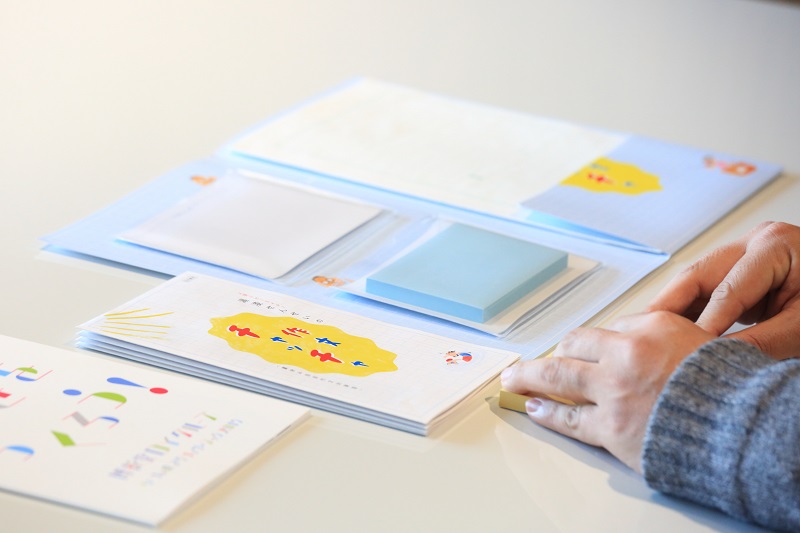
Hakuhodo is in the communications business, which I feel means it’s all the more important that we do our part to make a difference on behalf of children and their education. What with online news and social media it’s now easy to get out your message, and there’s lots being written out there, much but not all of it trash. So children these days should definitely master the basics of thinking and communicating.














